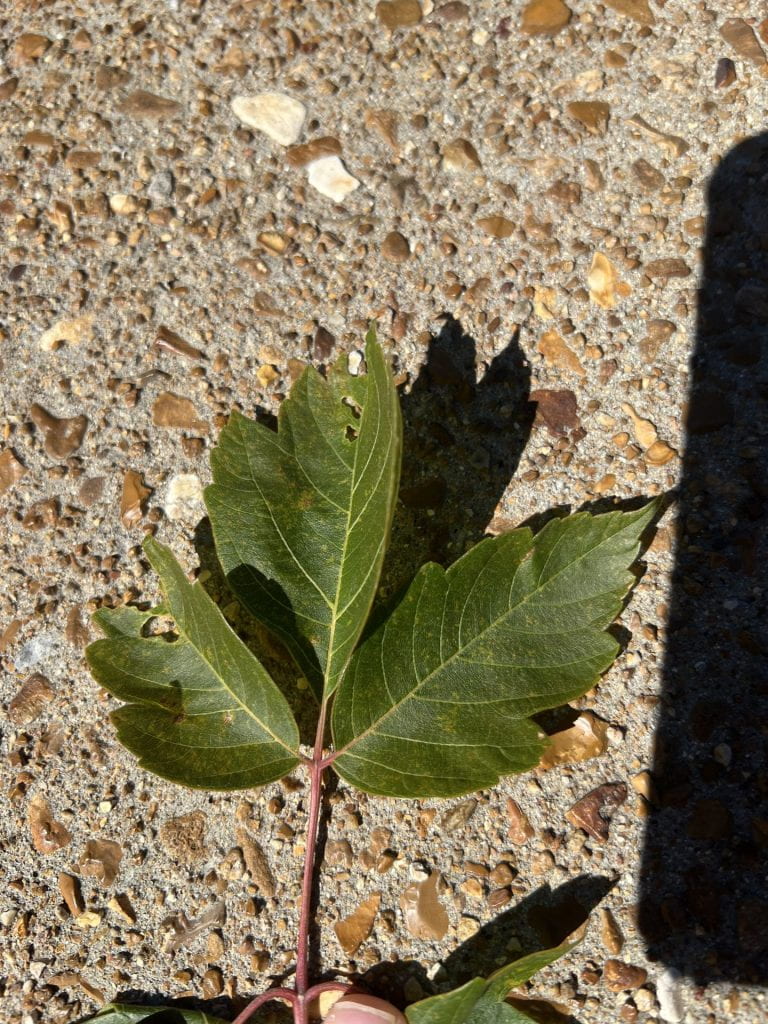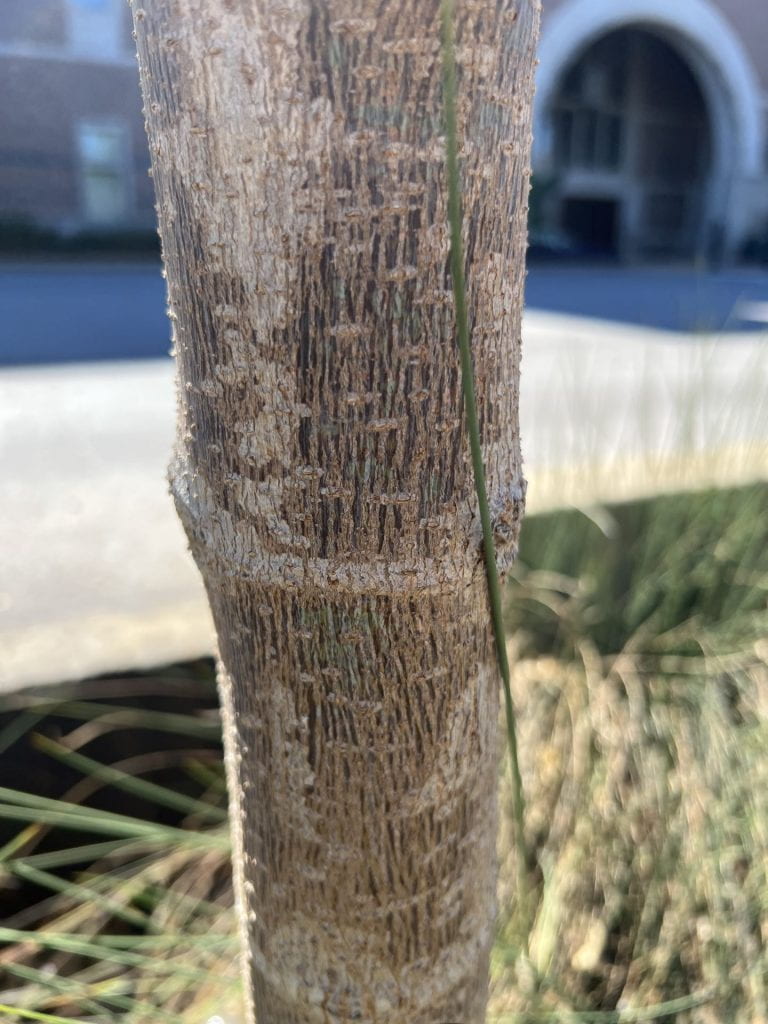Boxelder Maple
Arbor Walk #118, TreeKeeper ID #6843

Boxelder Maple is notable because of the usual leaves this species has compared to all other native maples. Instead of the normal simple leaf, it instead has compound leaves, which means it has leaflets. There are two other maples in the arboretum that have compound leaves, Paper Bark Maple and the Three-Flowered Maple, but these are native to Asia.
The common name comes from the similarities it has to other plants that are not closely related to maples. The “box” comes from the similar whitish wood to that of Common Box (Buxus sempervirens), and the “elder” comes from the similar compund leaves to the Elders (Sambucus).


GPS Coordinates
N/A
Percent Concrete
N/A
Distance to Buildings
| Year | Close Building #1 | Close Building #2 | Close Building #3 |
|---|---|---|---|
Distance to Other Species
| Year | Close Species #1 | Close Species # 2 | Close Species # 3 |
|---|---|---|---|
Standard Measurements
| Year | Height (m) | DBH (cm) | Crown Diameter N-S (m) | Crown Diameter E-W (m) | Average Crown Diameter (m) |
|---|---|---|---|---|---|
| 2023 | 5.1 | 6 | 2.31 | 3 | 2.655 |
Nests and Pests
| Year | Description |
|---|---|
| 2023 | N/A |
Leaf Identification
The leaves of the Boxelder Maple are odd-pinnately compound with 3-5 leaflets, rarely 7 (when it only has 3 leaflets, it is called trifoliate). The leaflet shape is very variable, but they tend to be lanceolate to ovate. The margin is serrated to lobed, and the venation is pinnate and reticulate. The leaflets are 2″ to 4″ long and has a hairy (pubescent) underside. The leaf arrangement is opposite.
Twig and Bud Identification
The twigs of the the Boxelder Maple are usually green to greenish-purple. The leaf scars meet in raised points and are often covered in glaucous blooms (waxy coating that is easily rubbed off). The buds are white and hairy with many bud scales. It has multiple buds at each terminal.
Bark Identification
Young Boxelder Maple’s have warty bark. As it ages, it develops shallow interlacing ridges.
Fruit Identification
The fruit of the Boxelder Maple are two-winged samaras with around 60 degrees between the wings. They are about 1″ to 1 1/2″ long and form in drooping clusters. Immature fruit are greenish-yellow, but as it matures, it turns brown.
Flower Identification
The Boxelder Maple is dioecious. Both the male and female flower look virtually the same, but the male flower tends to be yellow-green while the female flowers tend to be more reddish-green.
‘Sensation’ Identification
The ‘Sensation’ cultivar of the Boxelder Maple has a much brighter display of leaf color during the fall. This tree’s leaves normally change to a dull yellow during the fall, but this cultivar changes them to a bright red and orange.








